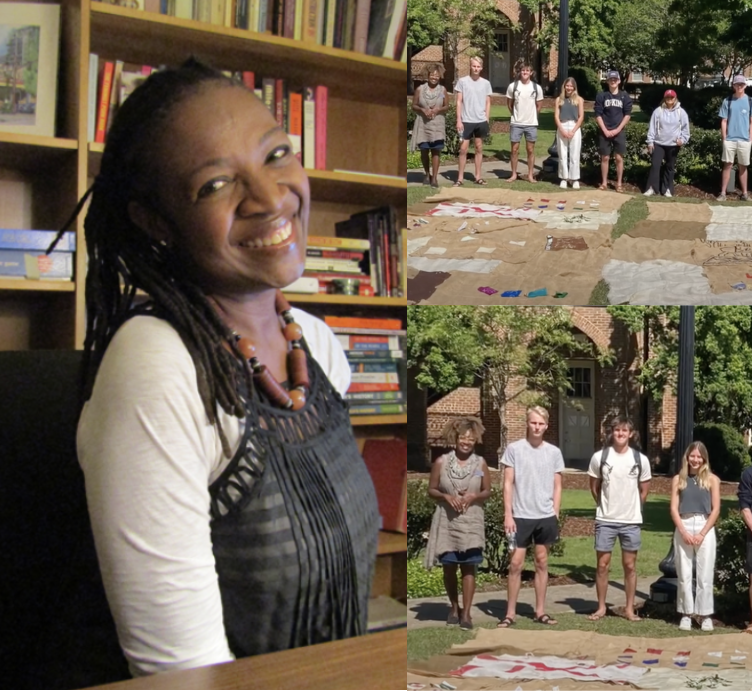For their third Slow Art Day, the Gorgas House Museum, which is the oldest dwelling on the campus of the University of Alabama, hosted an event focused on a bohemian blue bead that was found behind the museum and is believed to have once belonged to an enslaved person.
Slow Art Day coordinator, Dr. Sharony Green, Associate Professor at the Department of History at the University of Alabama, asked her students to study the bead and slavery in advance of the event, then create art based on their study (some even created haikus). She then invited the campus and local community to slowly look at the bead and hear about the students’ work.
Visitors were also invited to use bead stations that were set up in the front parlor of Gorgas House to make a blue bead bracelet to commemorate the event.


Above is a preview/link to the website they used to promote the project.

Dr. Green gave us some history about the bead:
The bead was found in an outdoor cooking area and was likely owned by an enslaved person. Some researchers believe it arrived via the Pacific Northwest and was brought to the Deep South via an indigenous trade network and that it was subsequently used as a protection amulet by an enslaved worker. While we speculate, we can also study the bead and sort through its significance during the antebellum period.
Dr. Sharony Green
Here’s a link to view some of the projects from Dr. Green’s students: Blue Bead Project Catalogue, and below you can scan a few of their photos and videos. All students took either an introductory level History class or an upper level History class taught by Dr. Green.
At Slow Art Day HQ we love how Dr. Green designed this whole Slow Art Day program – and that one small object, a bead, and its deep historical significance, became the point of inspiration for Slow Art Day. Thank you to Dr. Sharony Green, and her students, for such a unique event, and we look forward to whatever they come up with for Slow Art Day 2025.
-Johanna, Ashley, Jessica Jane, and Phyl
P.S. Stay up to date with future events at the Gorgas House via their social media @TheGorgasHouse


